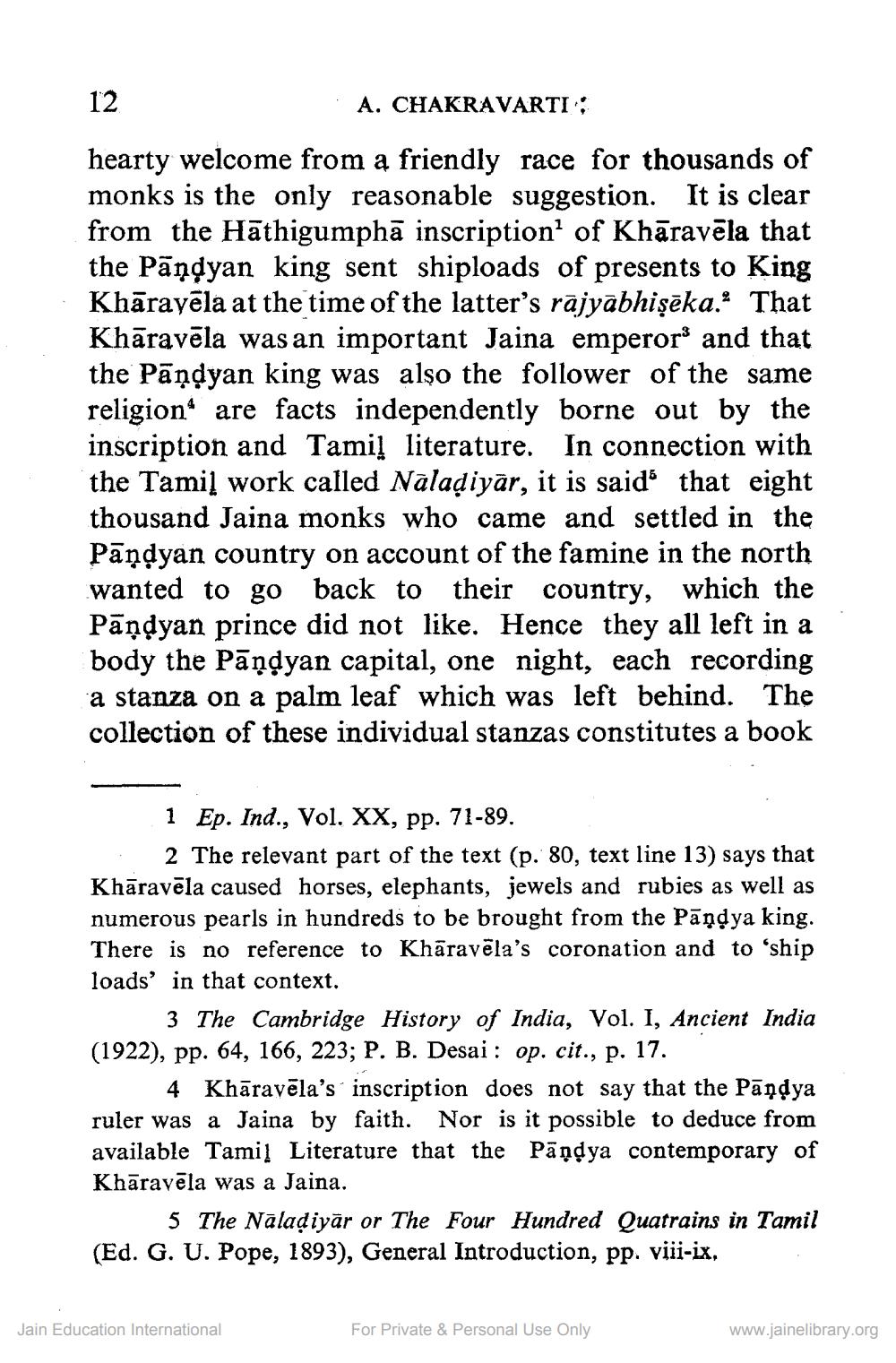________________
A. CHAKRAVARTI ::
hearty welcome from a friendly race for thousands of monks is the only reasonable suggestion. It is clear from the Hathigumphā inscription of Khāravēla that the Pandyan king sent shiploads of presents to King Khārayēla at the time of the latter's rājyabhișēka.That Khāravēla was an important Jaina emperors and that the Pandyan king was also the follower of the same religions are facts independently borne out by the inscription and Tamil literature. In connection with the Tamil work called Naladiyār, it is said that eight thousand Jaina monks who came and settled in the Pāņdyan country on account of the famine in the north wanted to go back to their country, which the Pāņdyan prince did not like. Hence they all left in a body the Pāņdyan capital, one night, each recording a stanza on a palm leaf which was left behind. The collection of these individual stanzas constitutes a book
1 Ep. Ind., Vol. XX, pp. 71-89.
2 The relevant part of the text (p. 80, text line 13) says that Khāravēla caused horses, elephants, jewels and rubies as well as numerous pearls in hundreds to be brought from the Pāņdya king. There is no reference to Khāravēla's coronation and to ‘ship loads' in that context.
3 The Cambridge History of India, Vol. I, Ancient India (1922), pp. 64, 166, 223; P. B. Desai : op. cit., p. 17.
4 Khāravēla's inscription does not say that the Pāņdya ruler was a Jaina by faith. Nor is it possible to deduce from available Tamil Literature that the Pāņdya contemporary of Khāravēla was a Jaina
5 The Naladiyar or The Four Hundred Quatrains in Tamil (Ed. G. U. Pope, 1893), General Introduction, pp. viii-ix,
Jain Education International
For Private & Personal Use Only
www.jainelibrary.org




